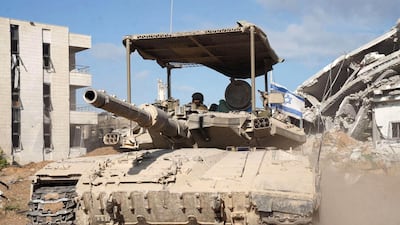The devastation caused by constant Israeli bombing of Gaza that flattened the area removing landmarks led to potential “mis-designation” targeting errors by ground forces, a critical paper by a leading defence think tank has said.
The very high Palestinian death count, approaching 40,000 according to the health ministry, could in part be attributed to what the Royal United Services Institute called “devastated terrain warfare” alongside misuse of AI information.
The London-based think tank’s report also highlighted the difficulties Israeli troops experienced in fighting Hamas in tunnel warfare that has proven “extremely stressful”.
Furthermore, the reserves, that form the core of the military, were deemed to be out of practice in urban fighting and operating with “outdated doctrine”.
Rusi, closely linked to the UK’s ministry of defence, wrote the paper in part to provide lessons and insight for the British army and draws some sobering conclusions.
For the depleted British military it was “in some respects more useful to consider itself in Hamas’s position,” the paper’s co-author, the respected military commentator, Dr Jack Watling, wrote in Tactical Lessons from Israel Defence Forces Operations in Gaza.
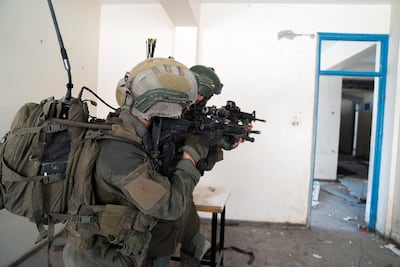
Rubble warfare
The heavy bombing of Gaza caused “rubblisation” that “degraded the ability to describe the terrain” for artillery and air strikes, said the report, which drew on multiple interviews with operational and tactical-level commanders, alongside analysts from a range of units.
As a result, the Israelis have now concluded that specific training is required for what it called “devastated terrain warfare” to allow troops to call in accurate fire.
The widespread destruction caused “a range of problems” in particular for armoured vehicles. “Tank drivers could not accurately assess the depth of craters through night vision, especially when there had been rain, and some vehicles were lost owing to rollovers when vehicles drove into shell holes.”
The “extreme degree of irregularity” in the landscape made it difficult for ground units to reference Hamas positions. “They would often defy precise verbal description, creating scope for their mis-designation.”
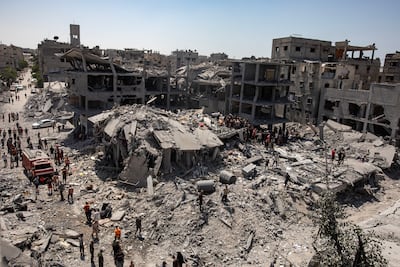
Tunnel stress
The 500km of Hamas tunnels under Gaza proved a unique challenge that even a high-tech army found difficult to tackle or map.
Hamas used the subterranean labyrinth to get behind surface areas that the Israelis had cleared and attack them, forcing the Israelis to adapt by fighting both on the ground and below it simultaneously but the action took its toll.
“Subterranean fighting was extremely stressful for its personnel,” the report said. “The fact that every corner could lead to an extremely close confrontation with an enemy, or the discovery of an IED, created a staccato quality to the pressure on individuals that was corrosive of morale.”
Robots and military dogs were used to clear booby-traps but the majority had to be done by humans given the number of doors, steps and obstacles.
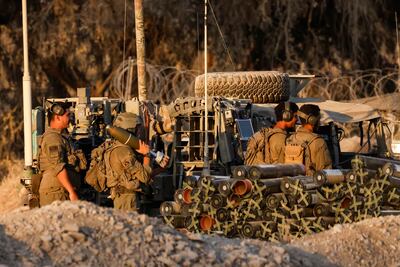
Outdated reserves
Israel’s reserves, who make up the majority of its forces and serve for 20 years after their initial two or three years training and service, suffered criticism.
The report stated that many had not conducted substantial training for several years, meaning that they “were out of practice” and at times operated “to outdated doctrine” that led to a break down in common understanding during assaults.
Reservists also wore privately purchased body armour and other kit that caused problems with thermal imaging identification.
Also, the use of M203 grenade launchers at short range led to a number of soldiers suffering friendly fire fragmentation injuries.
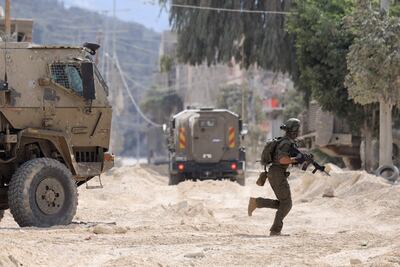
Bad PR
Significant criticism was made of the military’s public relations operation which had “underperformed” and was hamstrung by a lack of Arabic speakers.
The authors highlighted one incident in which the media team “undermined its own credibility” by presenting a Hamas document claiming it was guard duty roster for hostages, but was in fact a calendar in Arabic.
The bad PR was further hampered by the use of personal mobile phones and soldiers’ tendency to film everything on the modern battlefield, including prisoners who had been stripped naked. “Poor discipline by some IDF personnel has done significant harm after being filmed and released publicly,” it said. “Uncontrolled use of mobile phones to film and release information can be highly damaging.”
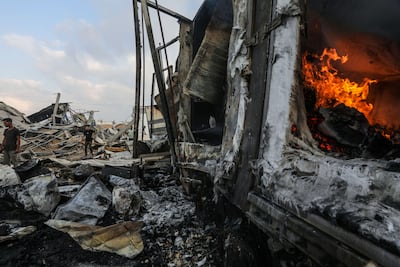
Hamas resilience
While Hamas has suffered significant casualties, with an estimated 14,000 killed – about half its force – its tactics have evolved.
Initially it attempted to ambush isolated Israeli units in hit and run attacks but could not concentrate sufficient firepower to inflict casualties.
Hamas also used heavy weapons brought out from tunnels camouflaged with earth or would openly move in civilian clothing without weapons but then retrieve cached arms to ambush the soldiers. Israeli units reported that around a third of buildings in Gaza city contained arms dumps.
In larger engagements superior Israeli firepower inflicted heavy losses, with Hamas resorting instead to attacking smaller patrols.
That adjustment meant Hamas leadership retained a command and control ability throughout achieving its “strategic objective of surviving” as a military power in Gaza “thus retaining administrative control, even with a heavily depleted force”.
Both Hamas and Israeli also learnt that using high rise buildings for observation was largely ineffective as there was limited tactical value in being above the second floor as at a certain height the streets become dead ground.
It was also noted that Hamas, unlike Hezbollah, had no effective artillery allowing Israeli troops to muster in the rear with little threat of attack. “Units have been able to concentrate in a way that troops in other theatres, such as Ukraine, have found perilous,” the report said.
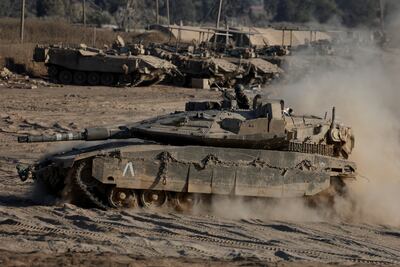
Battlefield technology
Drones also negated the need for elevated observation posts but for the combatants, as in Ukraine, they have proven highly effective in modern warfare.
In particular units that had “tactical strike” drones alongside guided anti-tank missiles could “monitor more urban terrain and conduct precision strikes at tempo in support of tactical actions”. A company equipped with them could hold ground that would otherwise require a battalion.
But Hamas fielded its own drones leading to Israel, at times, shooting down its own drones.
While the use of AI in targeting has been widely reported, including the “Lavender” system, the report said errors were made “not because of the software” but “often because operators are not taking sufficient time to verify automated conclusions”.
British army lessons
Ultimately the report is to be used by the British army and others to learn from the harsh urban fighting.
But given the poor state of the UK’s forces the report suggested it was better for the army “in some respects more useful to consider itself in Hamas’s position” by defending urban areas with a coastline to the rear “against a numerically superior enemy”.
While the army is meant to blunt a Russian land attack, its forces are inadequately equipped or staffed leading the authors to conclude that “while British troops may be trained to fight like the IDF, they find themselves equipped to die like Hamas”.
